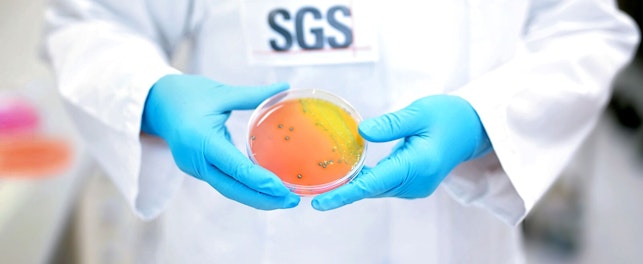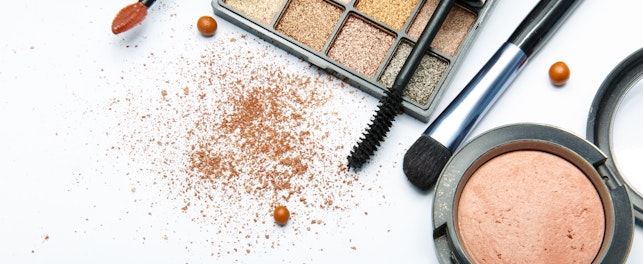Discover how eco-friendly product development, packaging and manufacturing, backed by rigorous testing, ensures safety and confirms environmental claims to avoid greenwashing.
Sustainability is now an important factor in all consumer product markets, including cosmetics and hygiene products. Companies must consider the environmental impact of beauty products throughout their lifecycle, from sourcing ingredients, through the manufacturing process and packaging, to how the consumer will use and dispose of the product. Applying the fundamentals of sustainability to the cosmetic industry is not only good for the planet, but it also builds competitive advantage in markets with environmentally aware consumers.
Key aspects of sustainability
Manufacturers and suppliers of cosmetics and hygiene products should consider:
- Sustainable ingredients: eco-friendly ingredients like those derived from renewable resources and with lower carbon footprints. This often means using natural ingredients and avoiding harmful chemicals
- Eco-friendly packaging: sustainable packaging uses compostable and recycled/recyclable materials and is biodegradable. This reduces waste and our reliance on virgin resources
- Water conservation: conserve water by employing techniques like recycling and reusing water during manufacturing and developing formulations that require less water
- Waste management: throughout the product's lifecycle, efforts should be made to reduce, reuse and recycle – e.g. refillable containers or designing products that minimize waste
Communicating sustainability to consumers
Many test methods have been developed to objectively assess a product's impact on human health and our environment. These allow us to scientifically evaluate a product's sustainability, providing trusted evidence to substantiate environmental claims, which can then be communicated to consumers.
Testing solutions should cover:
- Safety: vital for human health and a primary consideration for consumers and regulators. Products should be tested for prohibited and restricted substances, such as formaldehyde, heavy metals, allergens, phthalates, pesticides, 1,4 dioxane, endocrine disruptors, etc.
- Natural ingredients: many brands choose to use natural and/or organic ingredients to meet consumer demand. Independent testing laboratories can examine and certify that products are formulated with a high percentage of natural and/or organic ingredients and do not contain synthetic fragrances. They can also test for the presence of genetically modified organism (GMO) ingredients using the highly sensitive droplet digital PCR (ddPCR) technique, with a negative result indicating non-GMO status. Product certification marks such as IGENTM can help
- Biodegradability testing: this is a scientific process that determines how quickly and completely a material is broken down by microorganisms like bacteria and fungi. This is particularly important in the cosmetic industry as many products will end up being rinsed down the drain, where they can potentially harm the environment if they do not readily biodegrade.
OECD 301 is the recognized standard test series. The test material is introduced into a controlled environment with microorganisms. Oxygen consumption, carbon dioxide production and the rate of disappearance of the test material are measured over time. Based on these measurements, a percentage biodegradation value is determined. The product is considered readily biodegradable if it breaks down by at least 60% within 28 days under the specific conditions of the test, indicating the material will biodegrade quickly in the environment.
Ecotoxicity testing
This looks at the potential harm a product or its ingredients might have on the environment by assessing its effect on aquatic life or other organisms. The acute toxicity test (OECD 236) measures the immediate effects of a product on an organism, typically within a short timeframe (e.g. 24-96 hours). The chronic toxicity test evaluates the long-term effects of repeated exposure to lower concentrations of the product over an extended period.
Different tests utilize various organisms representing different environmental niches, such as aquatic organisms for assessing the impact on freshwater and marine ecosystems (e.g OECD 201), earthworms and plants for the impact on soil ecosystems (e.g OECD 207), and activated sludge (bacteria) to assess potential disruption of wastewater treatment processes. The REEFTOX test assesses the impact of a product on endangered coral species by assessing the short-term (24 hours) and medium-term (two weeks) impact of cosmetics ingredients on a population of 50 hard and soft coral species found in tropical/Indo-Pacific swimming zones. Performed in-vitro, this test doesn't deplete endangered marine coral reefs
Microplastics and PFAS
Microplastics and per- and polyfluoroalkyl substances (PFAS), known as forever chemicals, are becoming an increasingly hot topic for consumer product markets because they do not degrade over time in water and or in the environment. Many territories now have legislation banning the intentional addition of microbeads/synthetic polymer microparticles of a size up to and including 5mm in rinse-off cosmetics such as exfoliants, cleansers and toothpastes.
Particle identification and characterization
Particle identification and characterization can be done by using/combining several test methods, such as light microscopy, Fourier-transform infrared spectroscopy (FTIR) and scanning electron microscope/energy-dispersive X-ray spectroscopy (SEM/EDX). New methods for detecting PFAS are also constantly being developed and introduced
Risk of greenwashing
Where there is commercial advantage to be made from making environmental claims, there is also the risk of unscrupulous companies making false or ambiguous declarations, known as greenwashing.
Essential elements in fighting the threat of greenwashing include product label transparency backed by independent third-party testing to verify the authenticity of claims. In addition, some territories are now moving towards requiring quantifiable evidence to support environmental claims. For example, the European Union Green Claim Directive, which come into effect in 2026.
As a truly global service provider, we strive to provide high-quality testing services for our customers, continuously developing innovative testing solutions to ensure they are ready for current and future market requirements.
Hubert Brundu
Global Technical Manager Cosmetics & Hygiene



